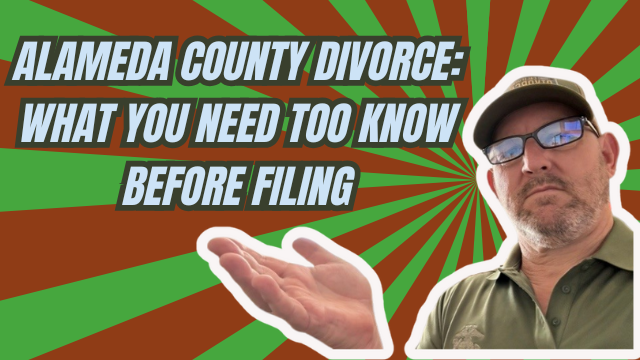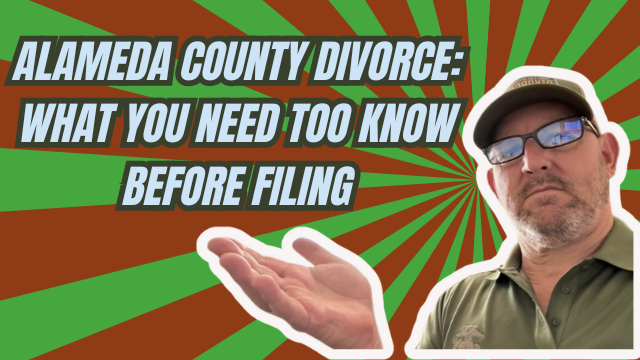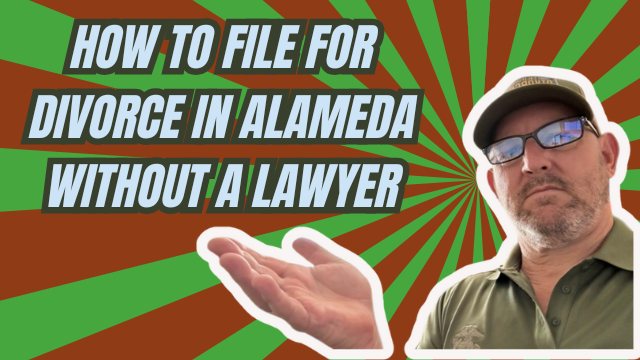What You Need to Know About Divorce in Alameda County | Alameda Divorce
I’m Tim Blankenship with Divorce661. If you’re thinking about filing for divorce in Alameda County, there are a few local rules and practical realities you need to understand before you file. I created a short video on this topic to walk people through the most common pitfalls — below is a clear, step-by-step guide that captures everything I covered, plus practical tips to help you avoid delays and rejections.
Overview: Why Alameda County Is Different
Every county in California handles court procedures a little differently. Alameda County has specific expectations for paperwork formatting and requires that all filings be submitted electronically. That means:
- No paper filings. No in-person drop-offs, no mailing forms to the courthouse.
- Mandatory e-filing. You must use an approved e-filing system and comply with that system’s file type and formatting rules.
- Local processing expectations. Even though California uses statewide forms, Alameda County expects them to be completed and attached in a certain way; small errors can trigger rejections.
Key Requirements You Can’t Skip
There are two requirements people trip over most often:
1. Proper e-Filing and Document Formatting
- File through an approved e-filing vendor — the court will reject filings submitted outside of that system.
- Follow the county’s document formatting rules: correct PDF formats, readable fonts, proper margins, and page orientation.
- Small technical mistakes (wrong file names, missing attachments, unsigned forms) are common reasons for rejection.
2. Complete Financial Disclosures
Alameda County requires both parties to exchange full financial disclosures before a final judgment can be entered — even in amicable cases. This is non-negotiable. If your financial declaration or required attachments are missing or incomplete, the court will not approve the judgment.
Tip: Don’t assume “we agree” will bypass this step. Complete Form FL-142/FL-150 (or the applicable financial disclosure forms) and exchange them according to the rules.
Common Mistakes and How to Avoid Them
- Missing Dates or Signatures — double-check every form before e-filing.
- Incorrect Attachments — confirm that required schedules, asset lists, and attachments are included and labeled correctly.
- Wrong File Types — convert documents to court-compliant PDFs and confirm the e-filing vendor accepts them.
- Failure to Serve and File Proofs — make sure proofs of service and any required declarations are filed in the correct format.
A Real Client Story
We recently helped a couple in Alameda County who tried to handle their divorce on their own. They submitted their judgment three separate times and were rejected each time for small technical issues. Once they came to us, we corrected the formatting, attached the required disclosures, and e-filed the case through the approved system. Their judgment was approved within one week.
Lesson: Small, avoidable mistakes can cost you time and frustration — and sometimes a lot more in fees if you don’t catch them early.
How Divorce661 Can Help
At Divorce661 we specialize in amicable, full-service divorces across California, including Alameda County. Here’s what we handle for you:
- Preparing and reviewing all statewide California forms to meet Alameda County’s expectations.
- Formatting and e-filing through approved vendors so the court accepts your documents the first time.
- Guiding you through mandatory financial disclosures and ensuring completeness.
- Flat-fee pricing and remote support — no courthouse visits required.
Step-By-Step Checklist Before You File in Alameda County
- Gather necessary documents: marriage certificate, financial documents, property lists, and any agreements you and your spouse already have.
- Complete statewide California forms carefully and double-check dates, signatures, and attachments.
- Convert documents to compliant PDFs and make sure file names and formats match e-filing rules.
- Use an approved e-filing vendor to submit your initial paperwork.
- Exchange and file all required financial disclosures before attempting to finalize the judgment.
- If you run into rejections, address the specific technical reasons quickly — common fixes are usually straightforward.
Final Thoughts and Next Steps
If you want to avoid surprises, rejections, and unnecessary delays when getting divorced in Alameda County, follow the checklist above. The county’s mandatory e-filing system and strict document expectations mean that even small errors can hold up your case.
If you’d like help getting it done right the first time, visit divorce661.com to schedule a free consultation. We’ll walk you through the Alameda County process, prepare and file your paperwork correctly, and get your case finalized as efficiently as possible so you can move forward with confidence.
“We know the court’s local procedures, e-filing requirements, and what it takes to get your divorce finalized without court delays or rejections.” — Tim Blankenship, Divorce661




